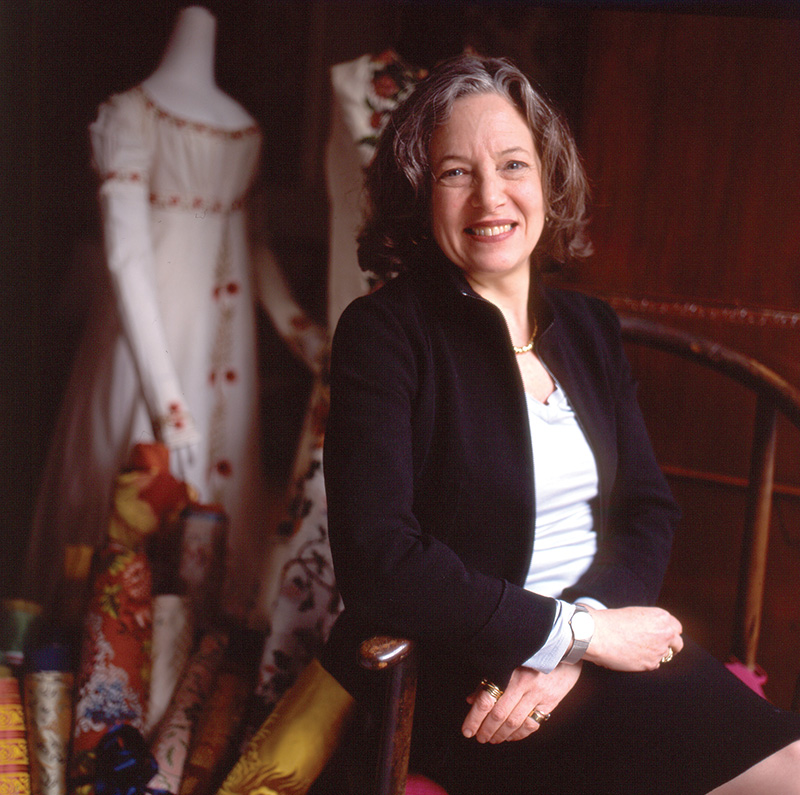
The precious textiles and clothing sold at Cora Ginsburg have as much charm, beauty, and depth as any other category of antiques, but like the firm itself, you may have to look for it. Tucked into two cozy rooms on the third floor of a nondescript residential building on Manhattan’s East Seventy-fourth Street, the gallery is as sparely furnished as a designer boutique, and many of its choicest items are not on display but must be retrieved from a back room and unrolled for viewing. At which point the owner, Titi Halle, is liable to hand you a magnifying glass so you can understand what it is you are looking at.
Halle is as unimposing and intimate a presence as her shop. One of a select group of dealers in a field that requires knowledge of goods from all over the globe spanning three or four centuries, she has a command of many disciplines—textiles, fashion, folk art, handcraft, weaving and printing technology, even the history of tangential matters such as Mummers’ performances. On Antiques Roadshow she comes across as elegantly erudite. But in her gallery, with her shy smile, eyeglasses, and girlishly long hair, she might remind you of a favorite librarian. Spreading one piece of fabric on the floor for a recent visitor, she cheerfully exclaimed, “That’s what floats my boat!”
The fabric in question was a delicate square of robin’s-egg blue with trails of abstract roses—a shawl of astonishing rarity, one of only a thousand made by Russian serfs between 1800 and 1851. Before she bought it from a dealer in Paris last fall, Halle had never seen a complete example. Despite being tapestry woven, she explains, the shawl’s single-ply wool is wrought so expertly that the garment is reversible. “It’s the dream of a lifetime,” she says.
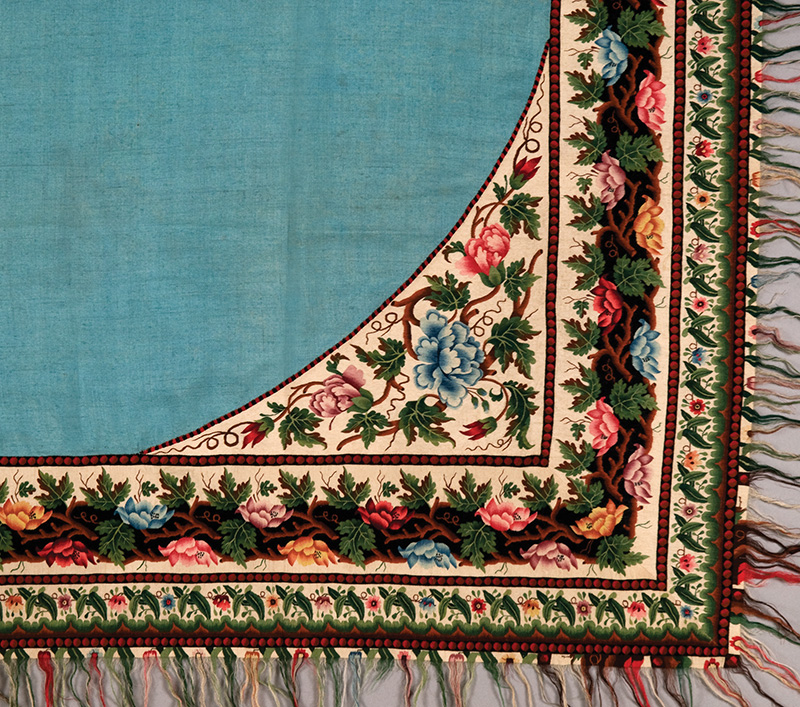
Any antique best appreciated with the help of a magnifying glass will almost necessarily be a small niche, or rather a series of small niches. The general public barely registers in Halle’s account books, and she usually limits herself to exhibiting at one show a year, the Winter Antiques Show. Private collectors tend to focus on a particular period or type of textile. While decorators have become crucial to the broader antiques trade, when it comes to antique textiles, “what most decorators want often doesn’t exist,” Halle explains. Those who understand her specialty come here for small amounts of material to cover pillows, but her most important, irreplaceable, pieces are off limits to anyone who would cut them up. The majority of her clients are museum curators who consult with her often to help identify the provenance of a piece of fabric or its use.
The irony is that though textiles and collectible fashion occupy a small niche, they are among the most accessible categories of antiques. Halle has no problem complying with the directive from the Winter Antiques Show to include modestly priced items for new collectors in her displays. A yard of art deco silk brocade ribbon can cost as little as twenty dollars, Halle points out, and even something “important” in terms of its author or age can be had for fifty dollars. Fabric can also be compellingly personal: it brings us into contact with the hands of the girls who stitched nineteenth-century samplers; it speaks eloquently of the social ambitions contained in a glamorous dress; and even commercial artifacts give us a glimpse of the history of cloth manufacturing. One of the most entertaining pieces Halle will bring to the winter show is a cotton sample for a line of French mid-nineteenth-century bandannas, which not only testifies to the explosion of design ideas that came with advances in cloth printing, but summons immediately the salesman who toted it around to Parisian retailers.
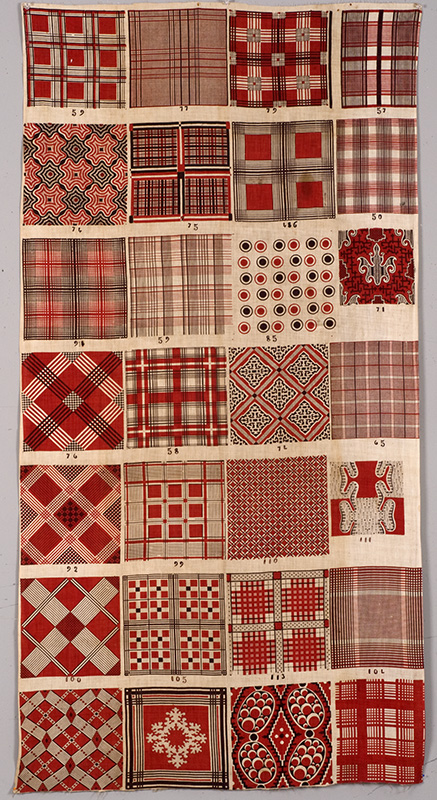
Our very familiarity with cloth, however, also breeds neglect. “Textiles are used up. That accounts for the rarity,” Halle observes. “People have little consideration for their importance to the past or the future. We think of fabric as disposable.”
Textiles also present peculiar problems for the collector. “Furniture is intuitive,” says Leigh Wishner, who works at Cora Ginsburg researching new purchases and, with Michele Majer, an assistant professor of fashion history at the Bard Graduate Center, is writing the firm’s upcoming catalogue. “People say, ‘I sit in that, or I hang that mirror on a wall.’ Even if they buy textiles, they don’t necessarily know what to do with them.”
To textile enthusiasts, doing nothing is often enough. A New Yorker who made her own clothes growing up, Halle trained as a dancer before moving to London in 1979. There she was introduced to Cora Ginsburg, wife of Benjamin Ginsburg, the New York antiques furniture dealer. Cora Ginsburg had developed a thriving trade for her husband’s firm in costume and textiles. Halle escorted Mrs. Ginsburg on her rounds of dealers from Cornwall and Kent to Paris.
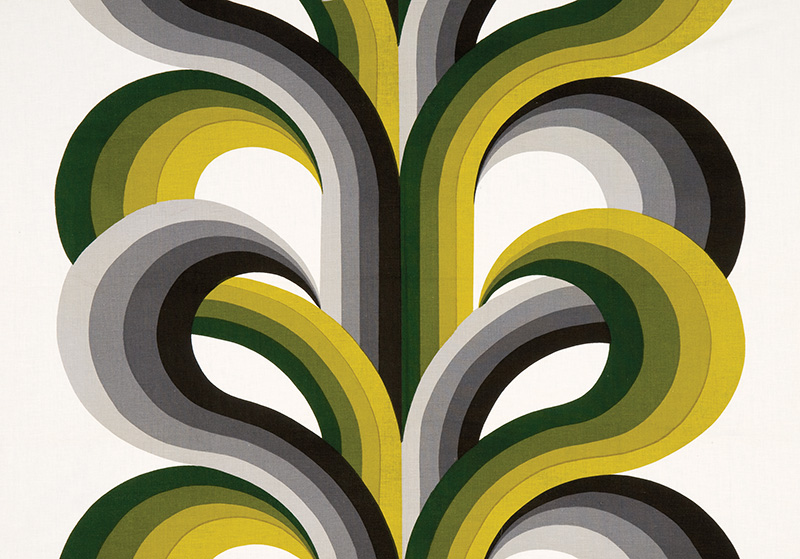
When she returned to New York in 1981, she took a job with Cora Ginsburg, who had cabinets of textiles and costume-filled trunks. For Halle it was a revelation—”I didn’t know you could have a profession of selling costumes and textiles as decorative arts,” she recalls. She was Ginsburg’s employee and protégée for the next sixteen years. “I thought of going to school,” she says, “but everyone laughed at the idea because I already had the best teacher. I was an old-fashioned apprentice.”
When Halle bought the business in 1997, she kept the name, but since Cora Ginsburg’s death, in 2002 at age ninety-two, she has reconfigured the living-room atmosphere into a more spare, orderly gallery. More substantively she has been expanding the firm’s ambit to modernist work, such as designs by Angelo Testa (1921-1984) and other mostly American artists and architects, assembling complete or at least authoritative collections of their work.
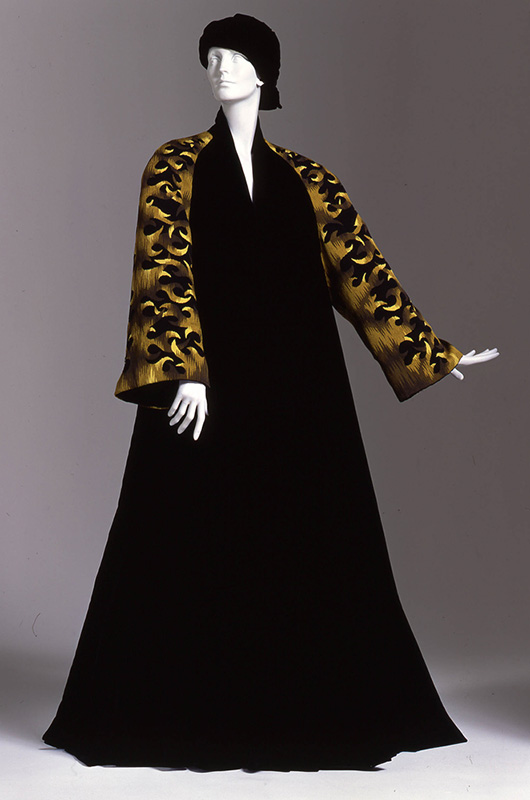
Opening up new areas of interest is not only savvy but necessary. Like any field in antiques the market for textiles shrinks as older collectors retire if younger ones do not come in to replace them. Despite the trend for splashy museum openings about fashion with starlets and magazine editors in attendance, curators’ textile budgets remain meager. In the early 1980s the auction houses held half a dozen important sales a year in the category; today Halle regards auctions as a waste of time. “You don’t know where the stuff is going to show up,” she says. “You might see a pair of eighteenth-century shoes in a decorative arts sale.”
Which is perhaps why, small market or large, for love or money, there will always be a Cora Ginsburg. Curators and collectors cannot be everywhere, after all. For that, they need Titi Halle.
